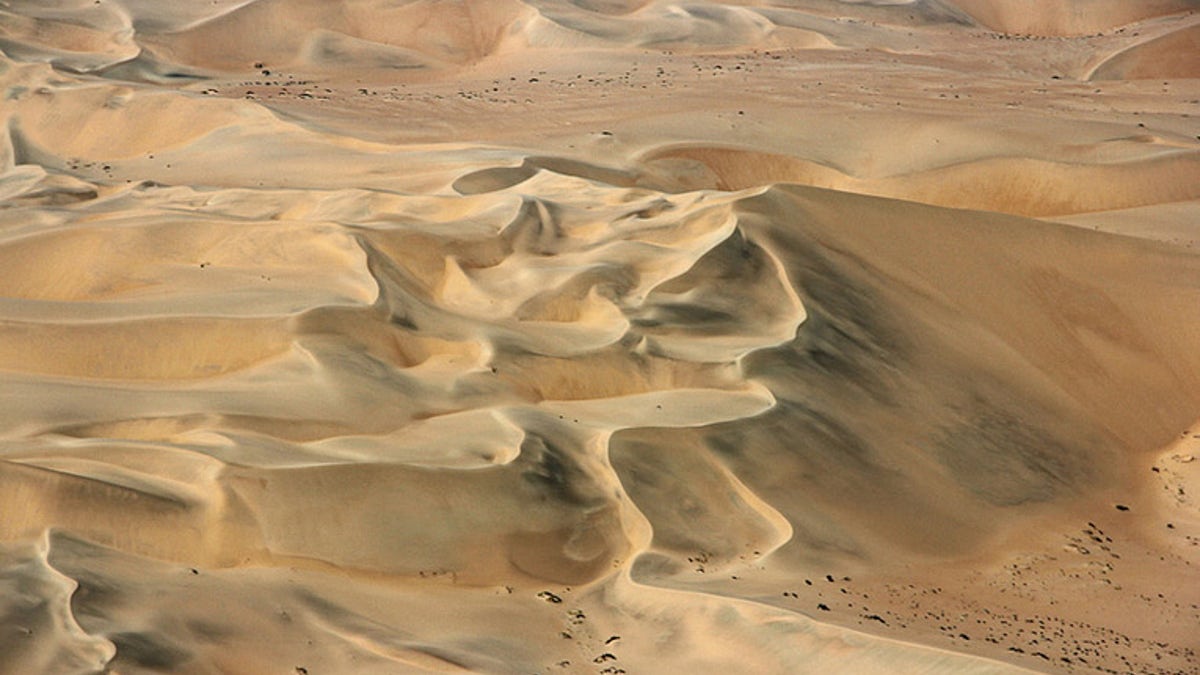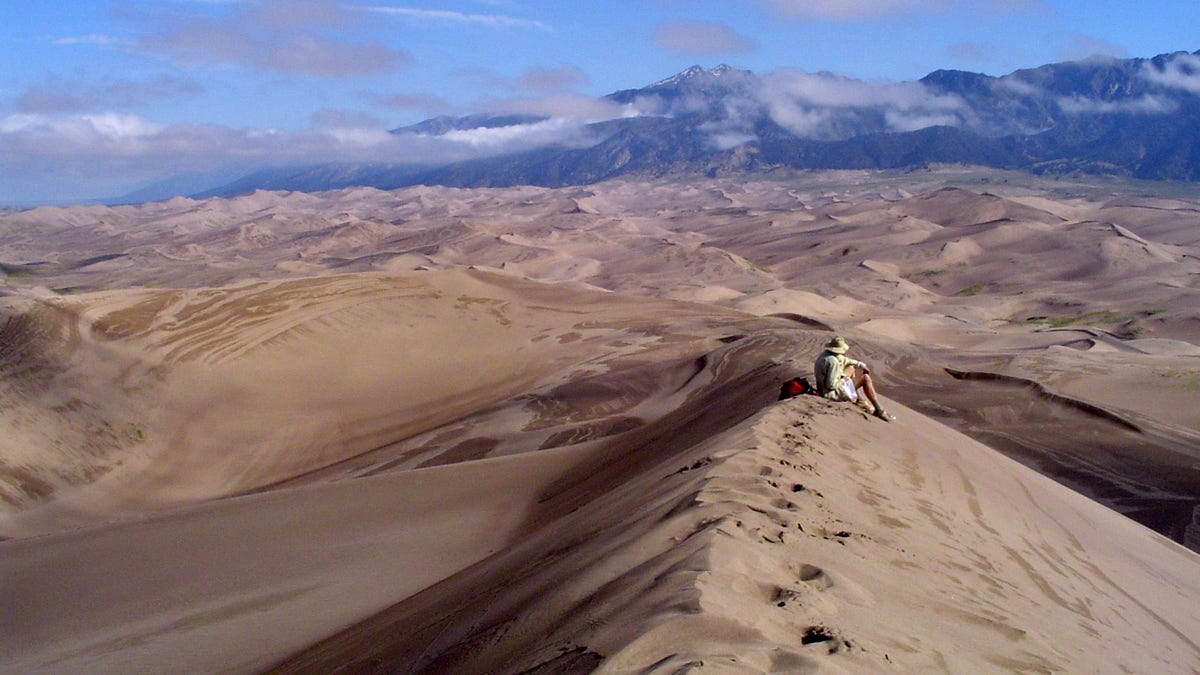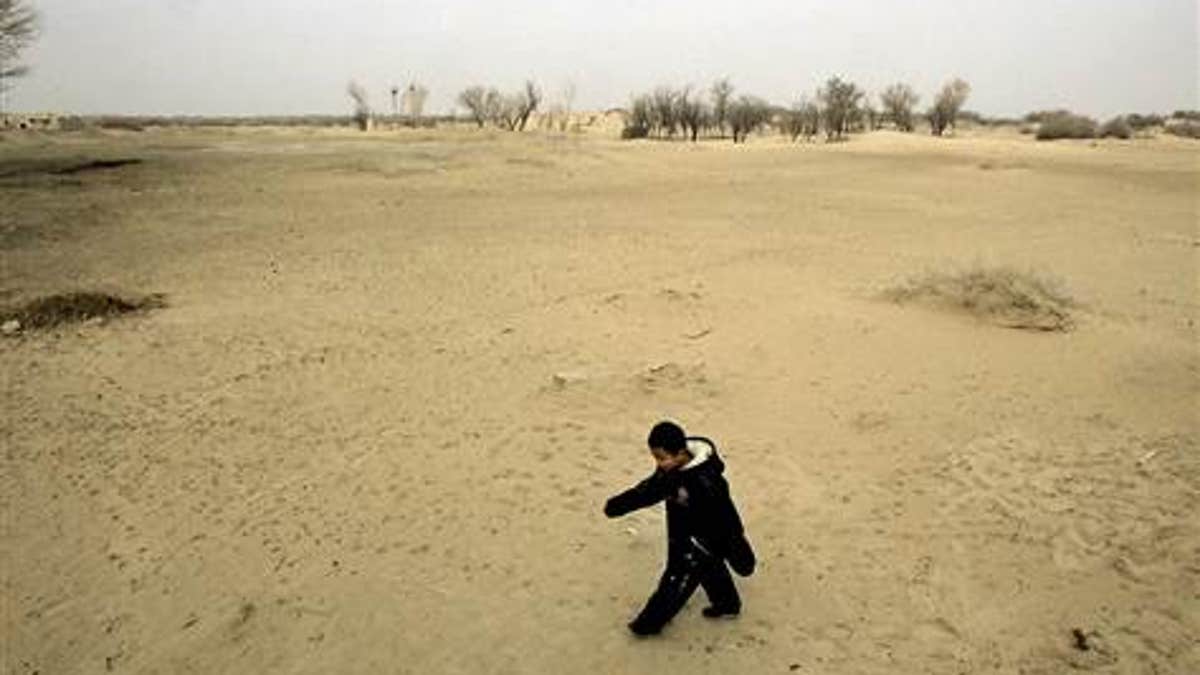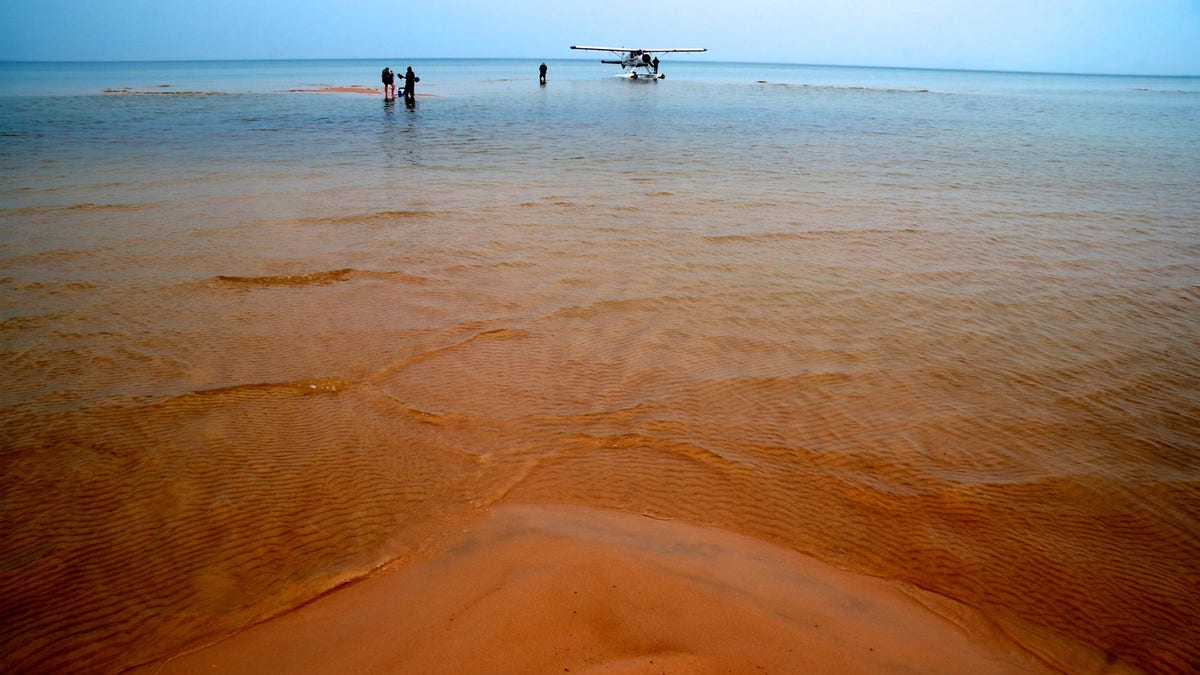With just the right amount of sand and wind, Mother Nature can sculpt some incredible works of art. Just take a look at these 10 captivating, record-breaking sand dunes from around the world.
1. Great Dune of Pyla: La Teste-de-Buch, France

(Atout France/ Franck Charel)
Also known as the Great Dune of Pilat, this monstrous sand dune located in southeastern France is Europe’s tallest. Each year, easterly winds alter the dune’s height, but it typically measures anywhere between 328 and 377 feet tall. The winds also affect the dune’s location, moving it 3 to 16 feet every year and pushing it farther back onto the adjoining forest. Over the years, the mobile dune has been said to swallow pine trees, roads and even houses.
Although the dune is a protected site, you can still hike to the top (just don’t expect to sandboard back down, as it’s illegal). If you’re traveling with children, check out the kid-friendly workshops and permanent dune exhibition. If you’re looking for an adult-only activity, try your hand at paragliding – you’ll get a great view of the dune.
2. Dune 7: Namib Desert, Namibia

(Vicki Brown,Solimar International 2012/ Namibia Tourism Board)
Dubbed by the Namibia Ministry of Environment and Tourism as the highest sand dune in the world, you need to see Dune 7 to believe it. The 1,256-foot dune got its name because it is the seventh dune past the Tsauchab River, which runs through part of the Namib Desert. The desert itself, believed to be dry for at least 55 million years, is considered the oldest in the world, so make sure you spend some time exploring it while you’re here.
3. Star Dune: Great Sand Dunes National Park & Preserve, Colorado

(NPS Photo)
Travel 35 miles northeast of Alamosa, Colo., and you’ll wind up smack dab in the middle of the tallest sand dunes in North America. The 30-square-mile main dune field at the Great Sand Dunes National Park (adult entrance fee, $3) contains a dizzying amount of impressive record-breaking sand dunes, the tallest of which is the 750-foot Star Dune. Framed by the Rocky Mountains, the view from Star Dune’s summit is stunning, but the trek to the top is a hard one. The dune is over three miles from the parking lot and takes two hours to climb.
The Great Sand Dunes National Park is open for exploration 24 hours a day, 7 days a week, but it’s best to explore in the early morning or evening during the summer to avoid the dangerously hot sands. Rent a sandboard in town before you go, because sandboarding is perfectly legal on these dunes.
4. Simpson Desert Dunes: Australia

(Tourism and Events Queensland/Charlie Ferguson)
Covering over 65,000 square miles, the Simpson Desert is not only the world’s largest sand dune desert, it is also home to the world’s longest parallel sand dunes. The magnificent red dunes stretch north to south -- from the Northern Territory to Queensland to South Australia -- and extend as long as 100 miles in some areas. The desert’s tallest dune, Big Red, is 130 feet tall and is located within the Simpson Desert National Conservation Park in Queensland. This park is closed due to high temperatures during Australia’s summer (November to March), but it’s open every other month, 24 hours a day, 7 days a week.
5. Badain Jaran Desert Dunes: Inner Mongolia, China

(AP)
If you ever book a trip to the Badain Jaran Desert in northern China, you’re in for a treat. The gigantic sand dunes here not only look impressive, they have personality, too.
The desert’s dunes are the highest stationary sand dunes in the world (the highest reaching 1,600 feet) and emit a constant rumbling and booming that sounds, strangely enough, like singing. It’s unclear what causes the noise, but it may have something to do with the layers of sand scratching against one another when the wind blows. Whatever it may be, the dunes are worth a visit. You can reach them by four-wheel drive or, if you’re feeling adventurous, camelback.
6. Mt. Tempest: Moreton Island, Australia

(Tourism and Events Queensland)
Located in Moreton Island National Park, just off of the southeast coast of Queensland, Mt. Tempest is considered the highest coastal sand dune in the world: The record-breaking beauty rises 935 feet above sea level. Because the dune is so high, the hike to the top can be hard, but there are seats along the way and the 360-degree view when you get there is worth it. Once you conquer the dune, take some time to check out the nearby shops, walking tracks, lagoons and lakes. If you’re interested in spending the night, the park provides camping sites.
7. White Sands National Monument: Tularosa Basin, New Mexico

(New Mexico Tourism Department)
At first glance the White Sands National Monument looks more like a snow-covered winter wonderland than a sand-filled dune field, but looks can be deceiving. The park’s distinct white sand gets its color from gypsum. There is so much of the mineral here (275 square miles, to be exact) that it has become the largest gypsum dune field in the world.
The white sand dunes here are an especially rare sight because gypsum dissolves in water and generally is not found in the form of sand. But there is no river that drains through the Tularosa Basin, so the white gypsum sand has accumulated over the years. If you want to check out the brilliant dunes for yourself, you can access the park from 9 a.m. to one hour after sunset, year-round.
8. Cerro Medanoso: Atacama Desert, Chile

(Turismo Chile)
Rising 1,800 feet, Cerro Medanoso is often acknowledged as the second highest sand dune in the world, but this title remains uncertain. What is certain is that Cerro Medanoso is the tallest sand dune in Chile and is located in the driest place on Earth: the Atacama Desert, which receives a meager 0.004 inches of rain per year. But the dry conditions don’t deter tourists from exploring the dunes. Sandboarding is a popular sport in Chile, and it’s not uncommon to see boarders shredding Cerro Medanoso. If you want to join in on the fun and shred some sand of your own, you can rent a sandboard in town.
9. Oregon Dunes: Oregon Dunes National Recreation Area, Oregon

(Eric Vaughan)
Billed as the largest expanse of coastal sand dunes in North America, the Oregon Dunes stretch an incredible 40 miles along the Pacific Coast. From Florence to Coos Bay, the wind-sculpted dunes reach a height of 500 feet and offer a great expanse for ATV riders, hikers, sandboarders and horseback riders.
10. Athabasca Sand Dunes Wilderness Provincial Park: Saskatchewan, Canada

(Tourism Saskatchewan/Davin Andrie)
Partially submerged in water and almost completely surrounded by dense forest, the Athabasca Sand Dunes aren’t your typical desert sand dunes. Extending 62 miles along the south shore of Lake Athabasca in the northwest corner of Saskatchewan, they are the northernmost major dune fields in the world. Because they are so isolated, they are accessible only by floatplane. There are no facilities or roads within the area and the park recommends that only those with wilderness experience traverse it.
